Best walkable ground cover plants: 11 options to transform your paths and lawn
Ideal for filling gaps in paving or replacing areas of lawn, these plants are perfect for walking on
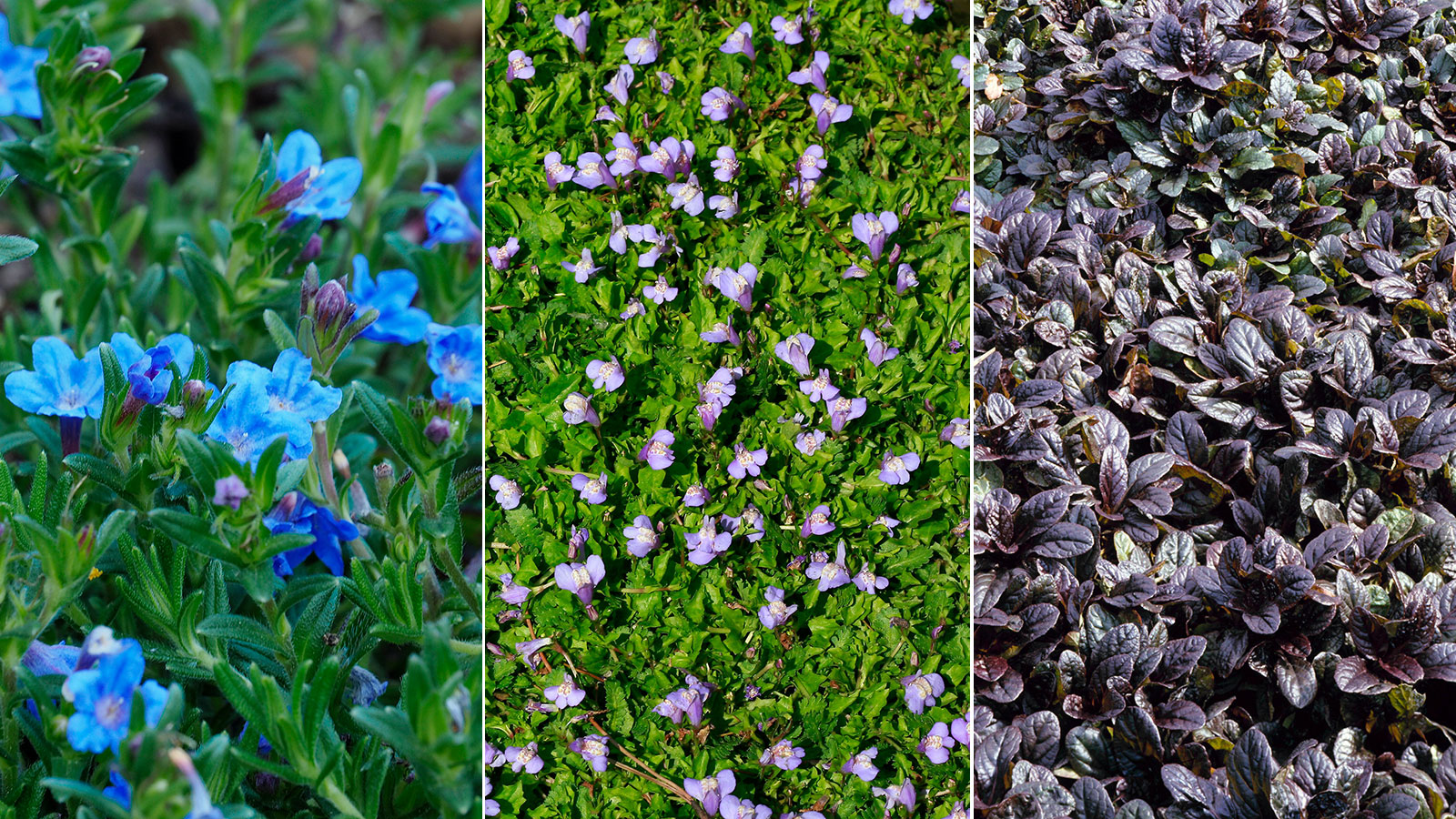

Grass might be the ultimate walkable ground cover plant, but even traditional lawns will wear out with too much foot traffic. Think about those brown play areas in your backyard, or how permissive paths emerge to become the main route through longer grass. But if we look beyond the traditional borders-lawns-driveway school of gardening, walkable ground covers give us whole new range of design and planting options.
Ground cover plants serve many useful purposes, from suppressing unwanted weeds to preventing soil erosion. When these plants are walkable too, they become the real workhorses of the garden – tough plants that offer a whole new palette of textures and seasonal interest underfoot.
Walkable ground cover plants won’t completely replace pathways and lawn areas, but they are supremely useful for filling gaps and covering areas that are tough for many other plants to grow in. From dry sunny spots to shady damp areas, there are ground cover plants that are good for walking on. And if walking on plants seems counterintuitive, try adjusting your gardening perspective a little and enjoy the sensory pleasures of plants underfoot. It feels different and many have leaves that release their scent as you walk on them.
11 walkable ground cover plants that are tough yet pretty
Plants you can walk on are also great for using in combination with backyard landscaping ideas to soften hard edges and they will cope with varying degrees of foot traffic.
Try spacing the slabs in your paved garden paths or patio flooring more widely so they can accommodate scented thymes or chamomiles and add to the pleasure of walking through your yard and relaxing.
1. Pennyroyal
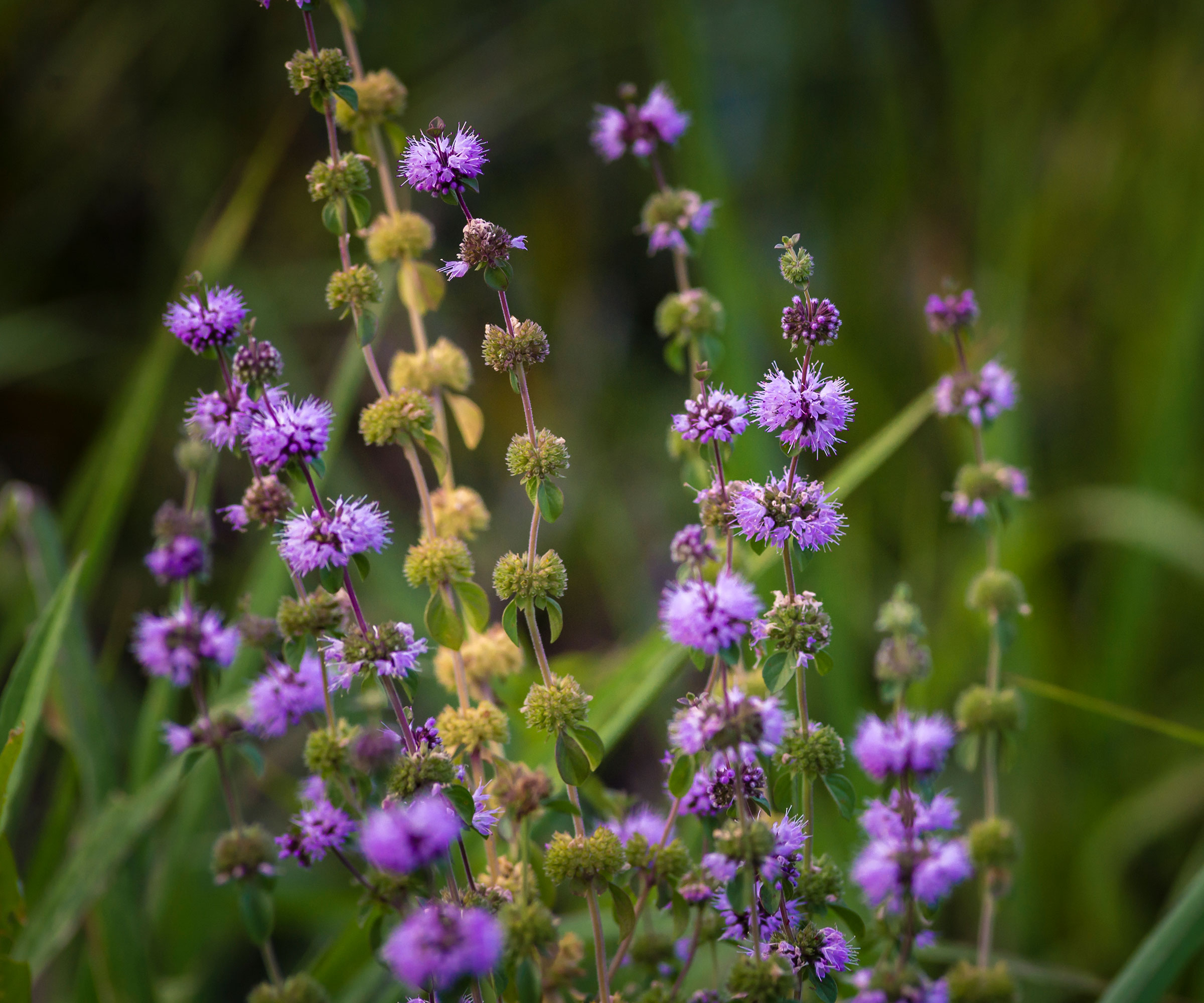
Pennyroyal has a mint fragrance and purple flowers
- Best for: Damp, shady, areas
- Height: 10in
- Spread: 60in
- Hardiness: USDA 6-9
A member of the mint family, creeping pennyroyal leaves have a typical minty fragrance when crushed. With a spreading habit, this makes a good walkable plant substitute for light traffic lawn areas where it will release its scent when you walk on it.
It won’t tolerate sun but is really useful for those damp, shady places that mimic its natural habitat of boggy waterside areas. A good plant for pollinators, its small flowers in late summer are an added attraction.
2. Thyme
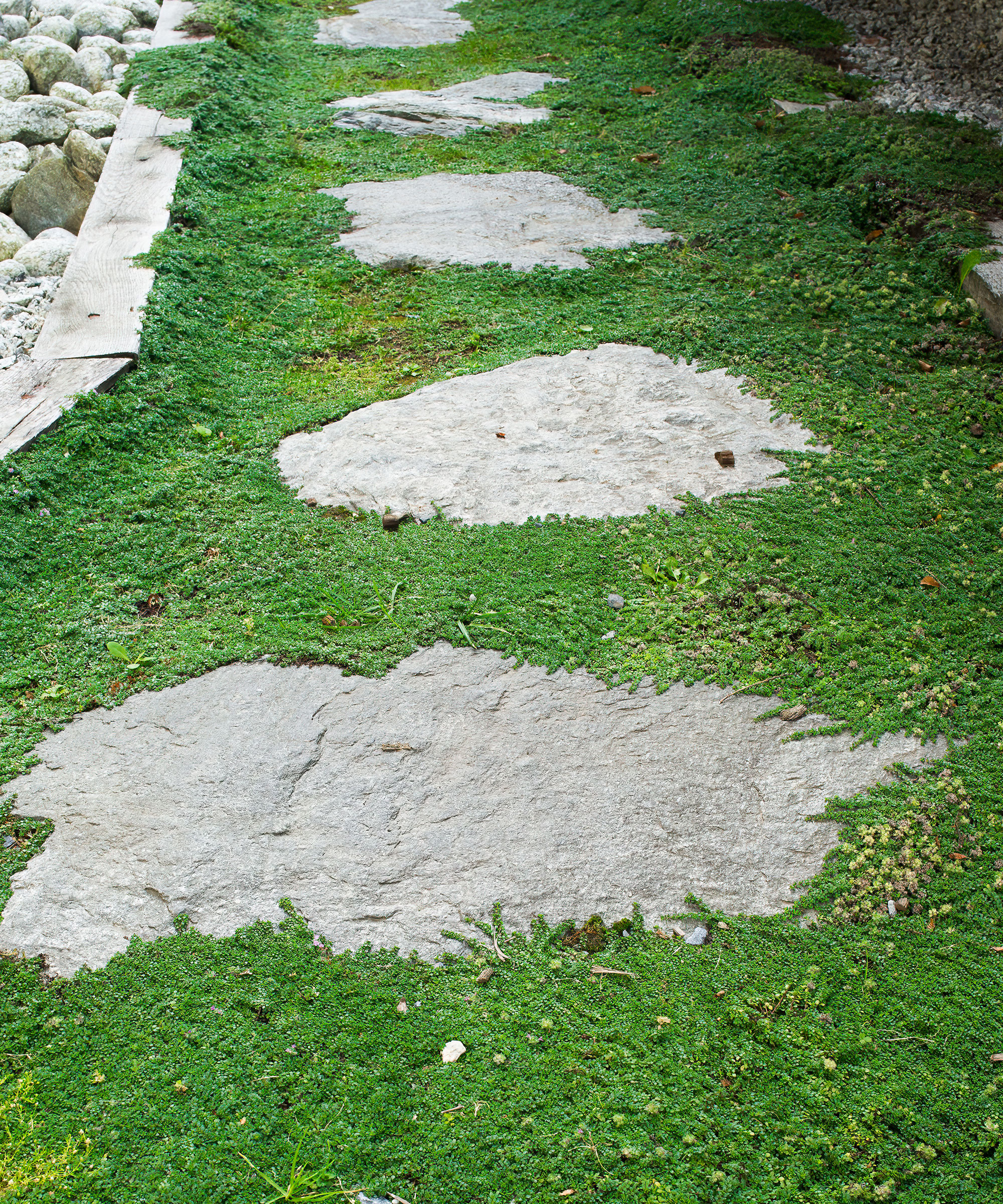
Make a stepping stone path across an area of creeping thyme for a lawn alternative
- Best for: Dry sunny areas, between paving
- Height: 4in
- Spread: 12in
- Hardiness: USDA 3-9
Creeping thymes offer a great choice for walkable planting. Use them on paths and driveways to fill cracks and gaps between and alongside paving.
All thymes share the qualities of tough leaves that release their fragrance when trodden on, and pretty, tiny summer flowers that attract bees to the garden, as well as other pollinators.
Good choices for areas of regular but light footfall include the grey green woolly thyme, Thymus pseudolanuginosus with slightly fuzzy grey green leaves and stems, and the pink flowering Thymus Coccineus Group (available from Nature Hills). Also recommended are Thymus praecox, Thymus pseudolanuginosus and Thymus serpyllum.
3. Chamomile nobile
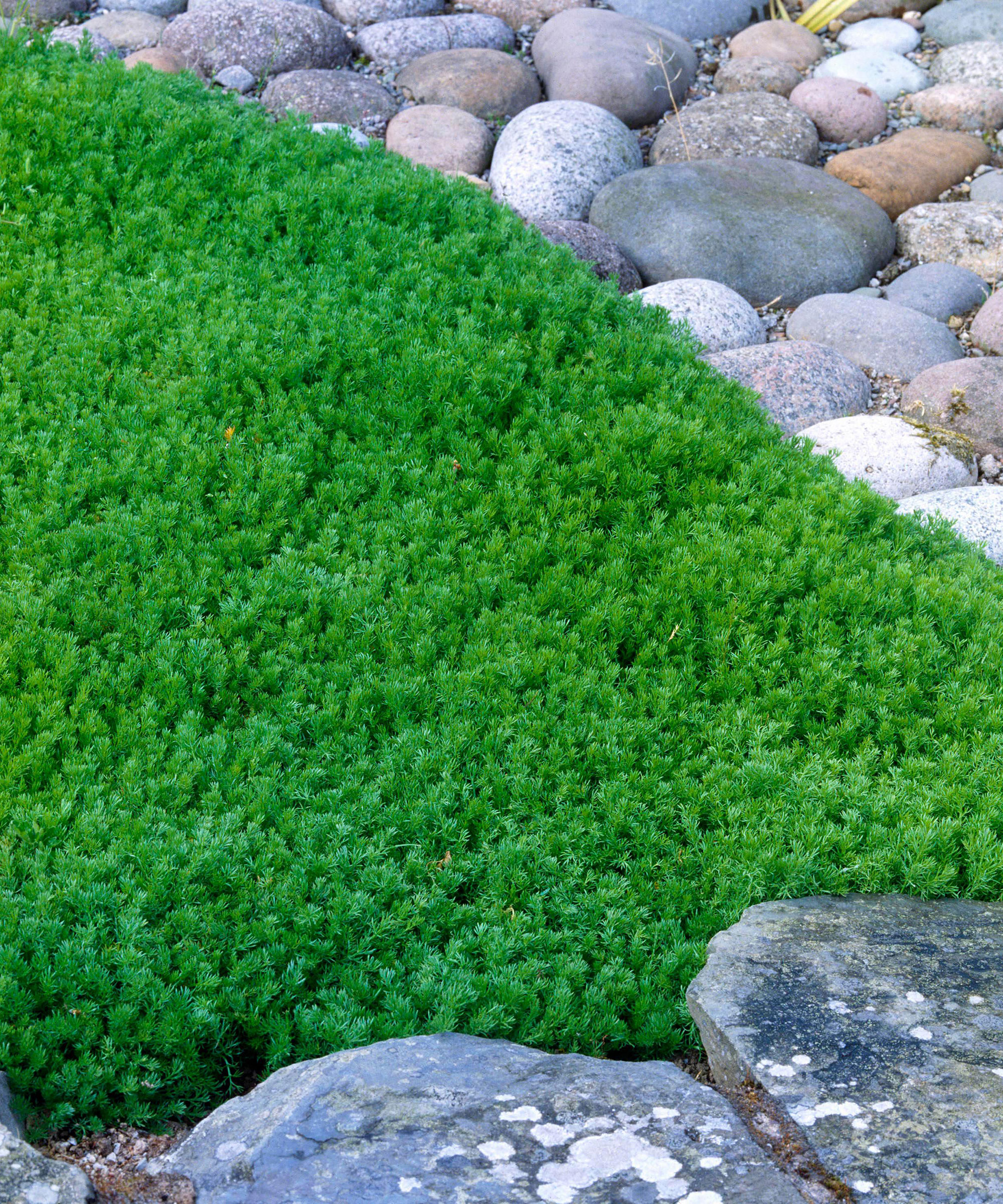
Create a pretty carpet of foliage and flowers with a chamomile lawn area
- Best for: Small, lawned areas
- Height: 6in
- Spread: 12in
- Hardiness: USDA 4-9
Chamomile lawns have long been a romantic and literary inspiration. While they won’t outperform a classic grass lawn, spreading chamomile can be used in smaller backyards or low-traffic areas, or as an aromatic spot to lie on.
Chamomile forms a dense carpet of leaves, adorned with daisy flowers in summer; it will release its distinctive honeyed scent when lightly crushed. It needs well drained soil with good moisture and you can pick the flowers for tea.
4. Soleirola solerolii
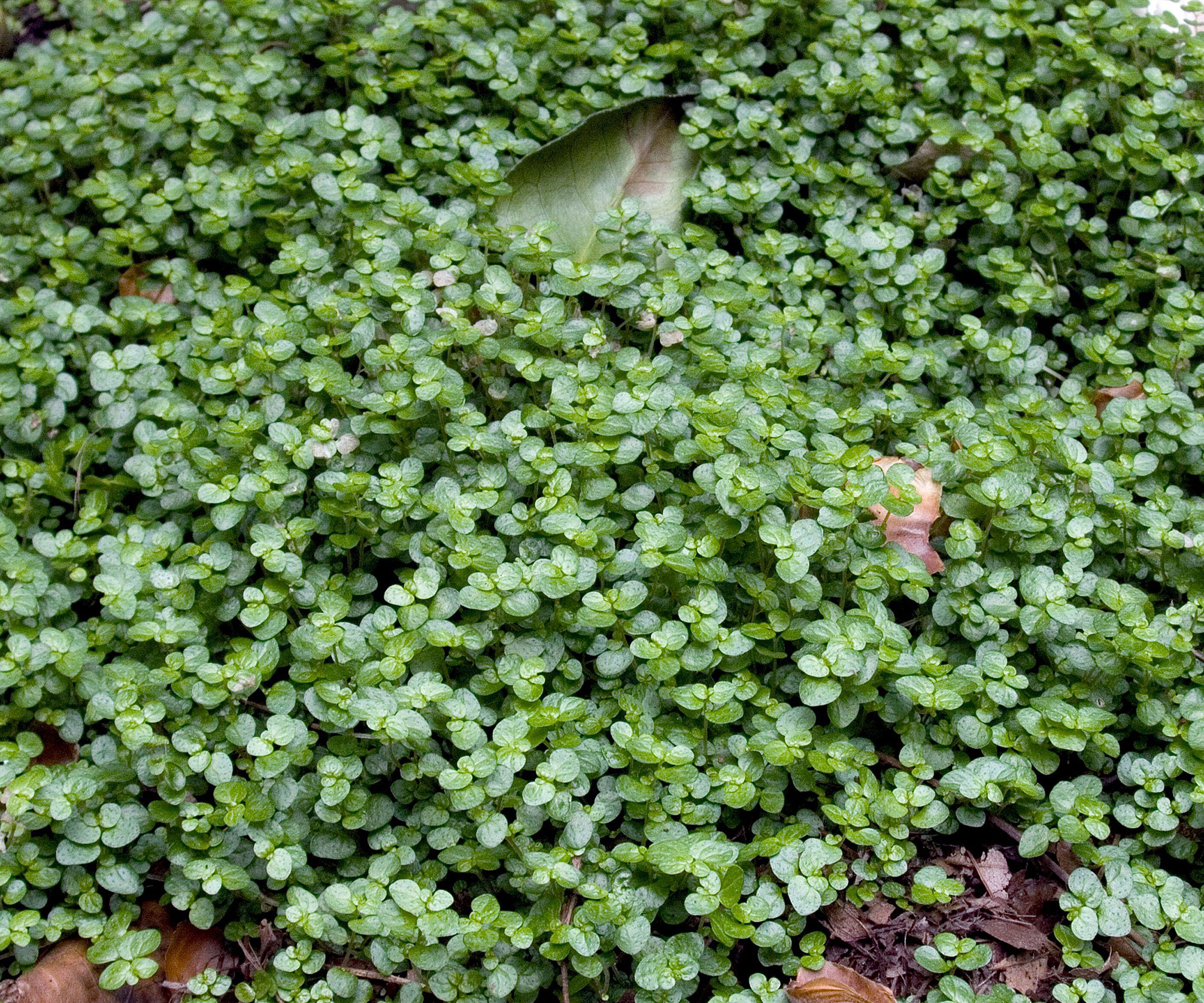
Soleirola solerolii will spread well in shady spots
- Best for: Shady, damp and stony areas
- Height: 4in
- Spread: 36in
- Hardiness: USDA 9-11
It’s not called mind-your-own business for nothing! When soleirola takes hold, it can spread quickly through stony, damp areas in deep shade very successfully. Often considered one of the best evergreen ground cover plants in warm regions, this plant has tiny emerald green leaves that resemble the baby’s tears that gives its other common name, this will remain evergreen in milder areas, but will die back in cooler zones.
Once established it offers a pretty, bright green alternative to shady lawns, but it won’t tolerate heavy footfall. Hard to find and often sold as an indoor plant, if you spot some in your neighbor’s garden, ask if you can take a plant cutting and grow it on.
5. Ajuga reptans
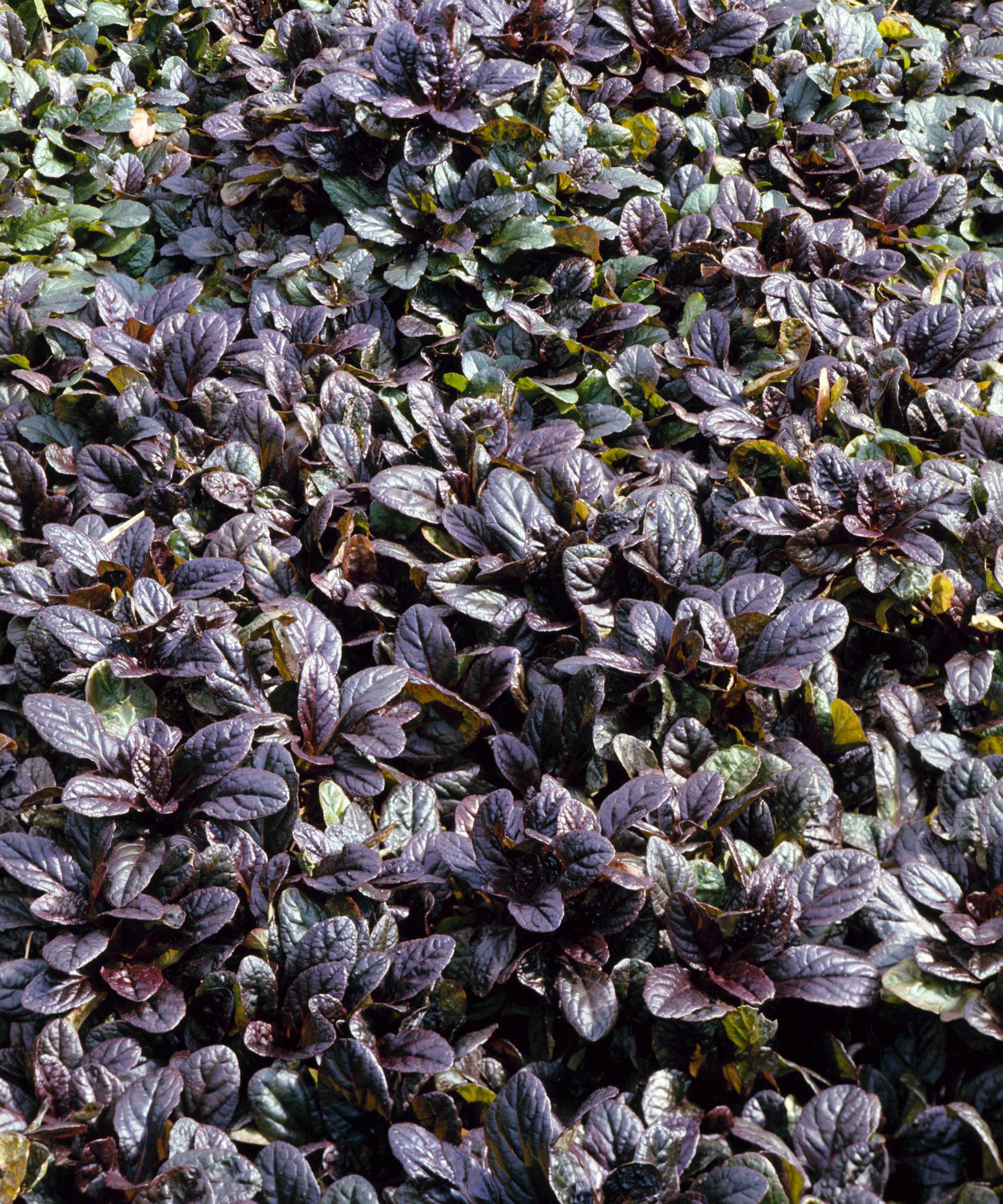
Add some drama with the dark foliage of Ajuga reptans
- Best for: Part shade, edging paved areas
- Height: 6in
- Spread: 12in
- Hardiness: USDA 4-9
The dark bronze leaves of Bugleweed look really attractive in borders as well as garden edging for paths, patios and driveways, where they will soften hardscaping edges and cope with a bit of traffic from feet and cars.
Ajuga tolerates shade and dry soil but ideally prefers slightly damp part shade where sunshine reaching it for some of the day will bring out the rich coloring of the foliage.
Try cultivar ‘Black Scallop’, recommended by Nature Hills as being an easy to care for, fast-growing ground cover plant – and even mowable after flowering.
6. Corsican mint
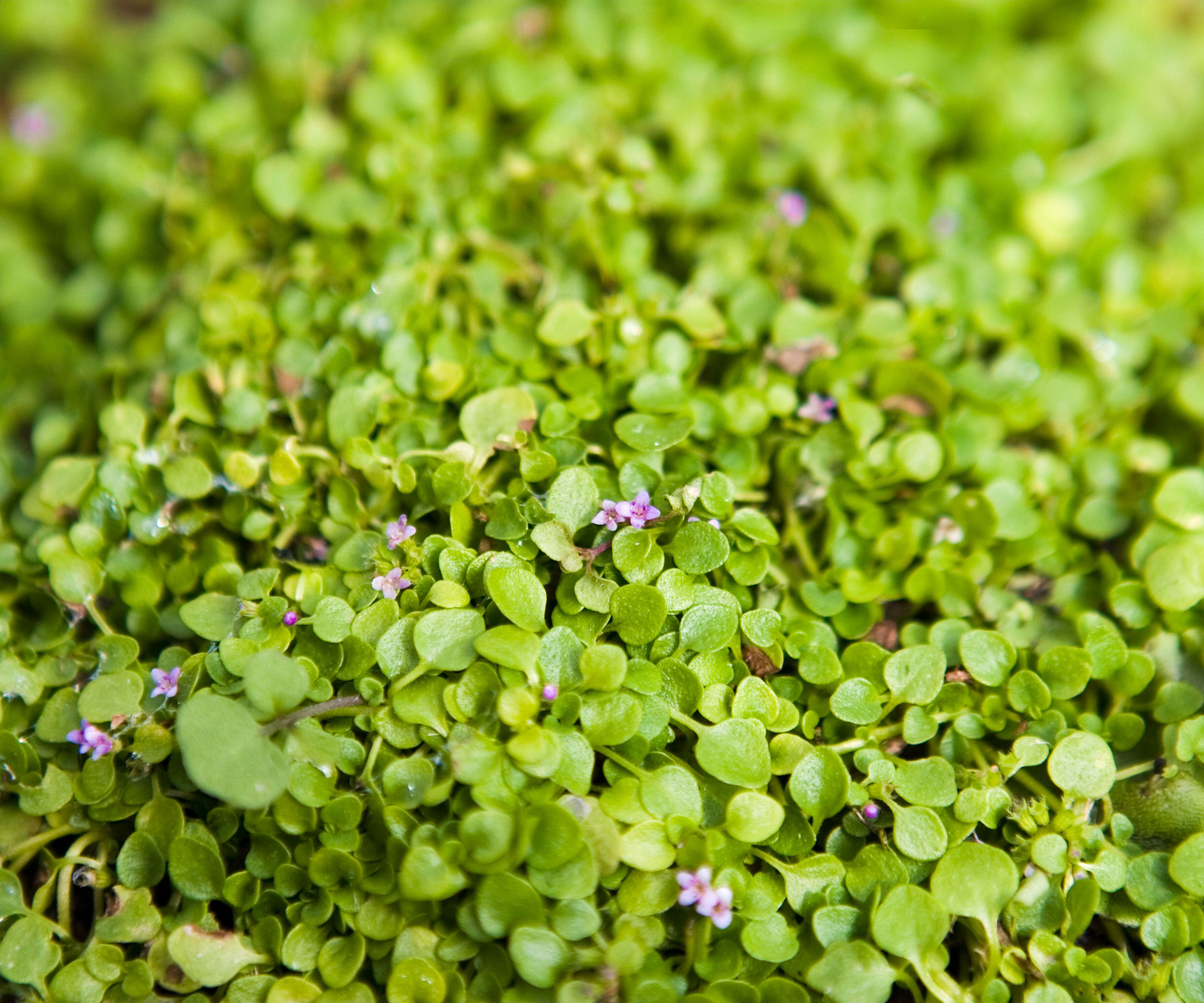
Corsican mint will grow best in areas of part shade
- Best for: Edging paths
- Height: 3in
- Spread: 12in
- Hardiness: USDA 6-9
This Mediterranean plant prefers part-shade and a good degree of moisture. In these conditions the small leaves will quickly carpet the ground with purple flowers appearing in summer to add to the interest of the mint-scented leaves.
It will tolerate light footfall, so is best used between paving stones. It’s a vigorous grower, so can take over if it’s happy in your garden.
7. Lithodora diffusa
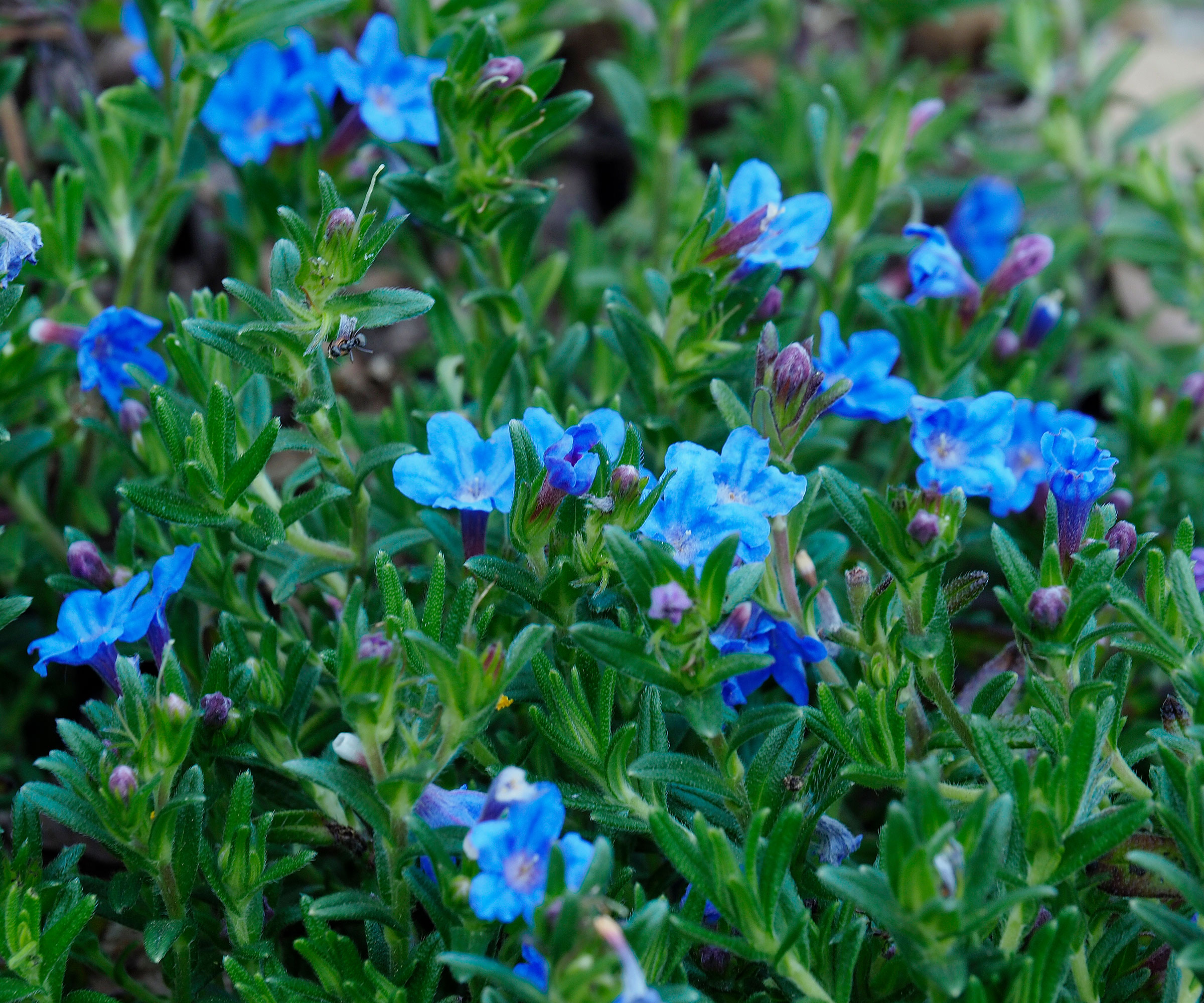
Lithodora diffusa 'Heavenly Blue' is ideal for using in xeriscaping
- Best for: Dry areas, xeriscaping
- Height: 6in
- Spread: 18in
- Hardiness: USDA 6-9
Plant lithodora into gravel gardens, paths and driveways where it will spread and brighten up the display with brilliant blue starry summer flowers. The dark green foliage is dense and somewhat rosemary-like.
Hailing from the Mediterranean it has good credentials for tolerating dry, rocky soil types and limited water so can be used in xeriscaping too. Recommended cultivars include ‘Heavenly Blue’, ‘Grace Ward’ and ‘Blue Star’, all available from Nature Hills.
8. Creeping Jenny
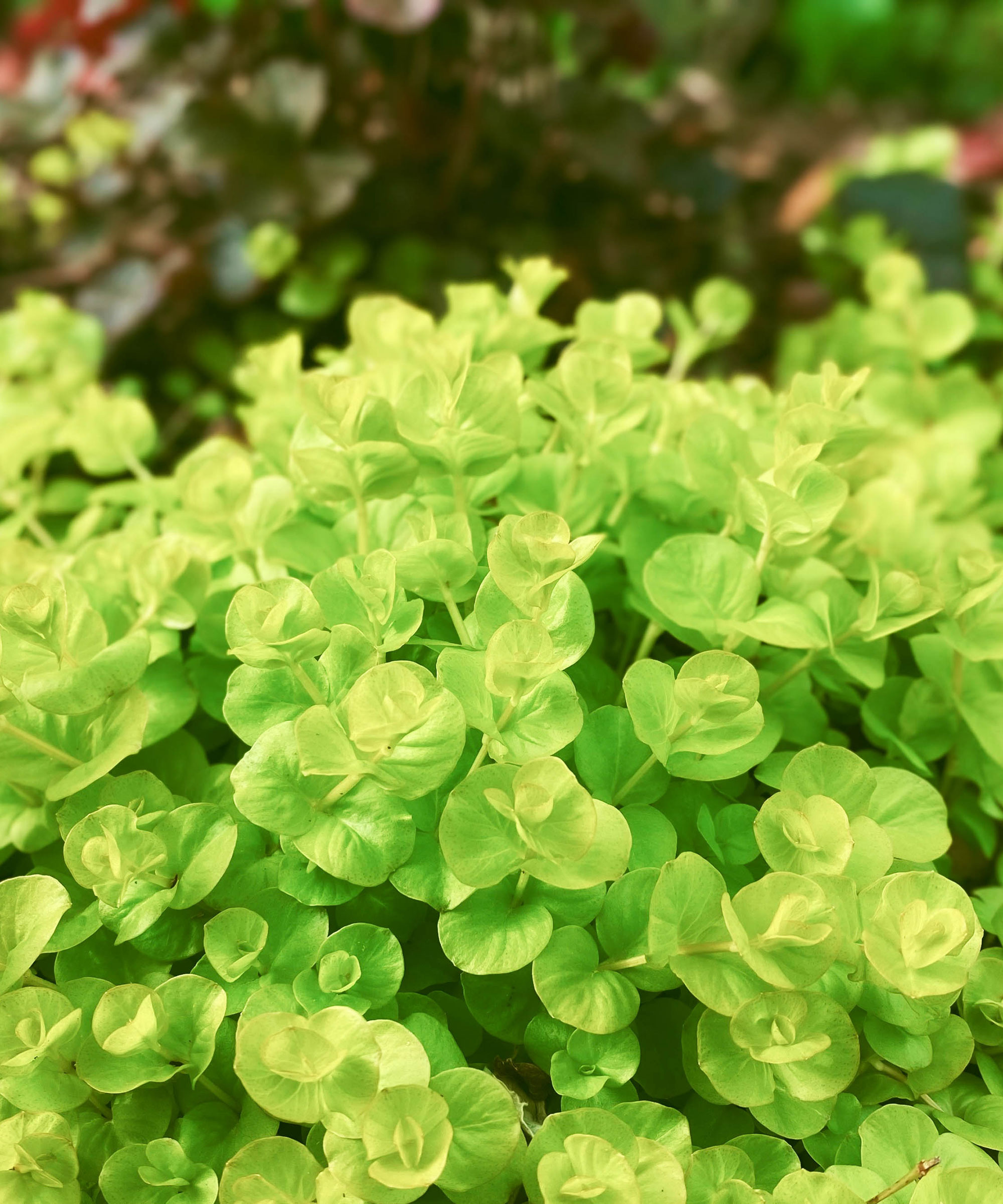
Opt for less invasive varieties if you don't want this walkable ground cover to take over your yard
- Best for: Paths in full sun or part shade
- Height: 6in
- Spread: 18in
- Hardiness: USDA 3-9
With bright green foliage, this fast grower will hold onto its leaves in milder climates and quickly populate the garden as a walkable ground cover plant in areas of light footfall.
It can be an invasive plant, although the golden forms, ‘Aurea’ (available from Nature Hills), ‘Goldii’ and ‘Goldilocks’ are less so. These golden green leaves will light up dark, damp areas, although too little sunlight can cause the leaves to darken. Small yellow flowers in late spring enhance the golden effect and they will tolerate most soils.
9. Moss
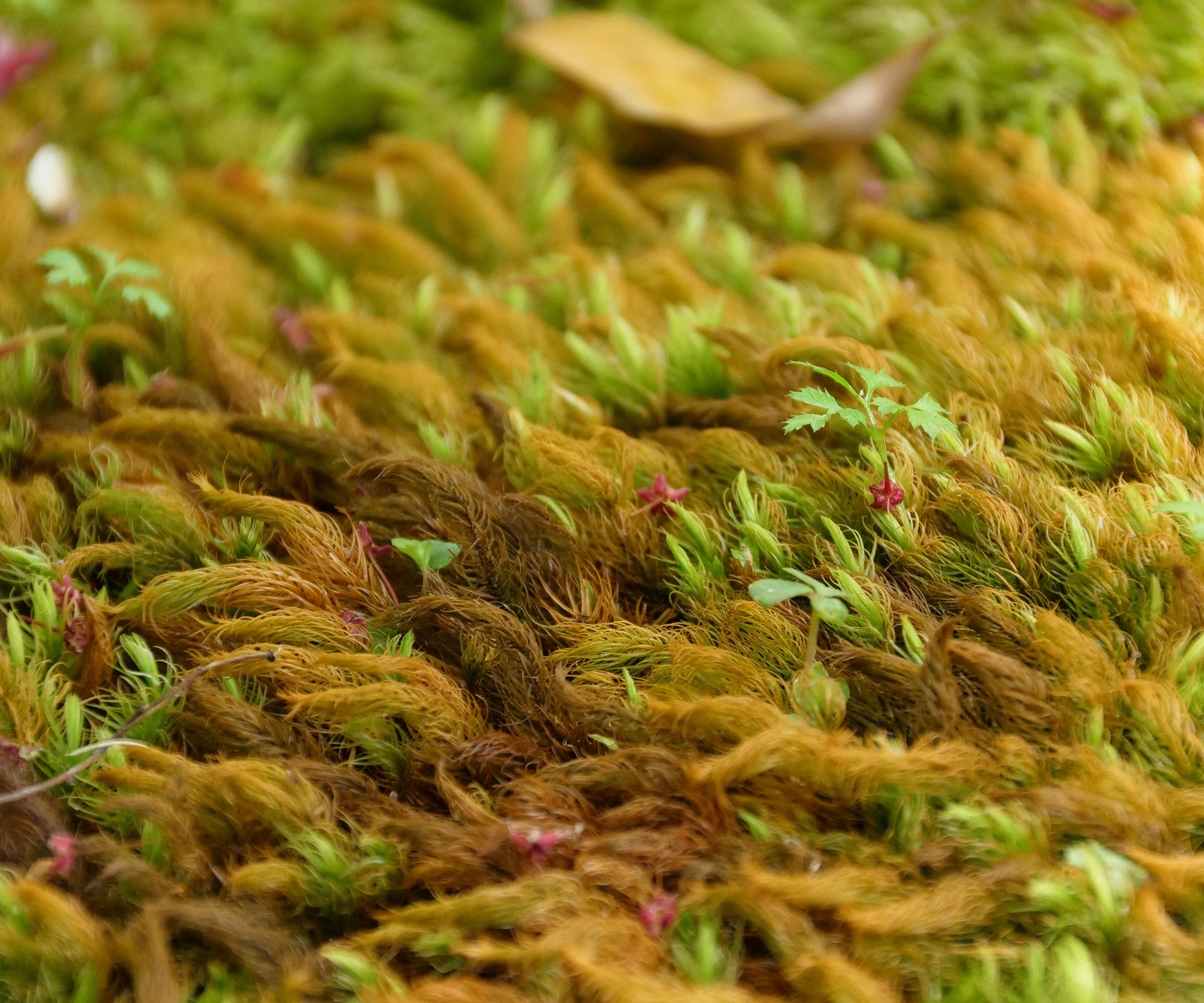
Moss lawns are a key feature of Japanese-inspired gardens
- Best for: Shady lawn areas
- Height: 4in
- Spread: 36in
- Hardiness: USDA 4-8
We spend a lot of time trying to get rid of moss out of lawns where they will often outcompete the grasses; and there are all too many examples of unsuccessful shady lawns.
But how about turning this perceived problem on its head and encouraging a moss lawn? Japanese gardens have perfected the art of sculpted moss gardens, exploiting the vivid greens and velvety textures of this amazing group of plants.
By using natural sheet moss, Hypnum imponens, you can grow a moss lawn in well-drained soil in sun or part shade. Moss Acres recommends it as a viable alternative to lawns saying: ‘Sheet moss is durable – it can be walked upon, and once established in a shady area, does not require watering to survive – it only helps keep it looking lush during periods of drought. Mosses are actually much more resilient than grass during droughts.'
10. Mazus reptans
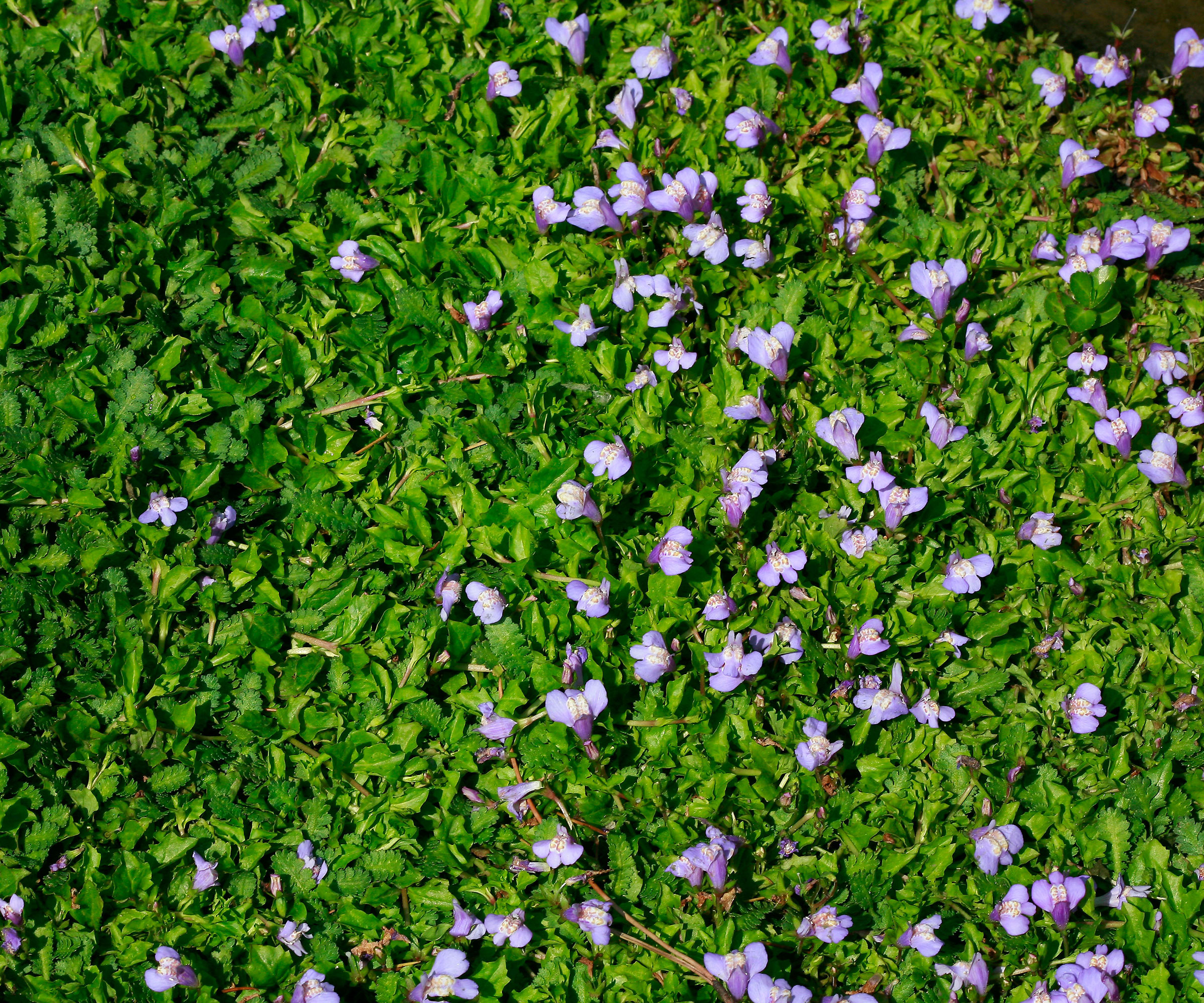
In milder areas, mazus reptans will hold onto its leaves all year long
- Best for: Shady areas of paving
- Height: 2in
- Spread: 12in
- Hardiness: USDA 5-8
This fast-growing, walkable creeping ground cover plant adds interest in shadier parts of the garden with bright green foliage and long lasting lilac blue summer flowers.
In milder areas it will remain evergreen, so would work well planted in between paving stones. Try combining with mosses and soleirola for a mix of green, leafy textures. Mazus reptans is available at Fast Growing Trees.
11. Alyssum
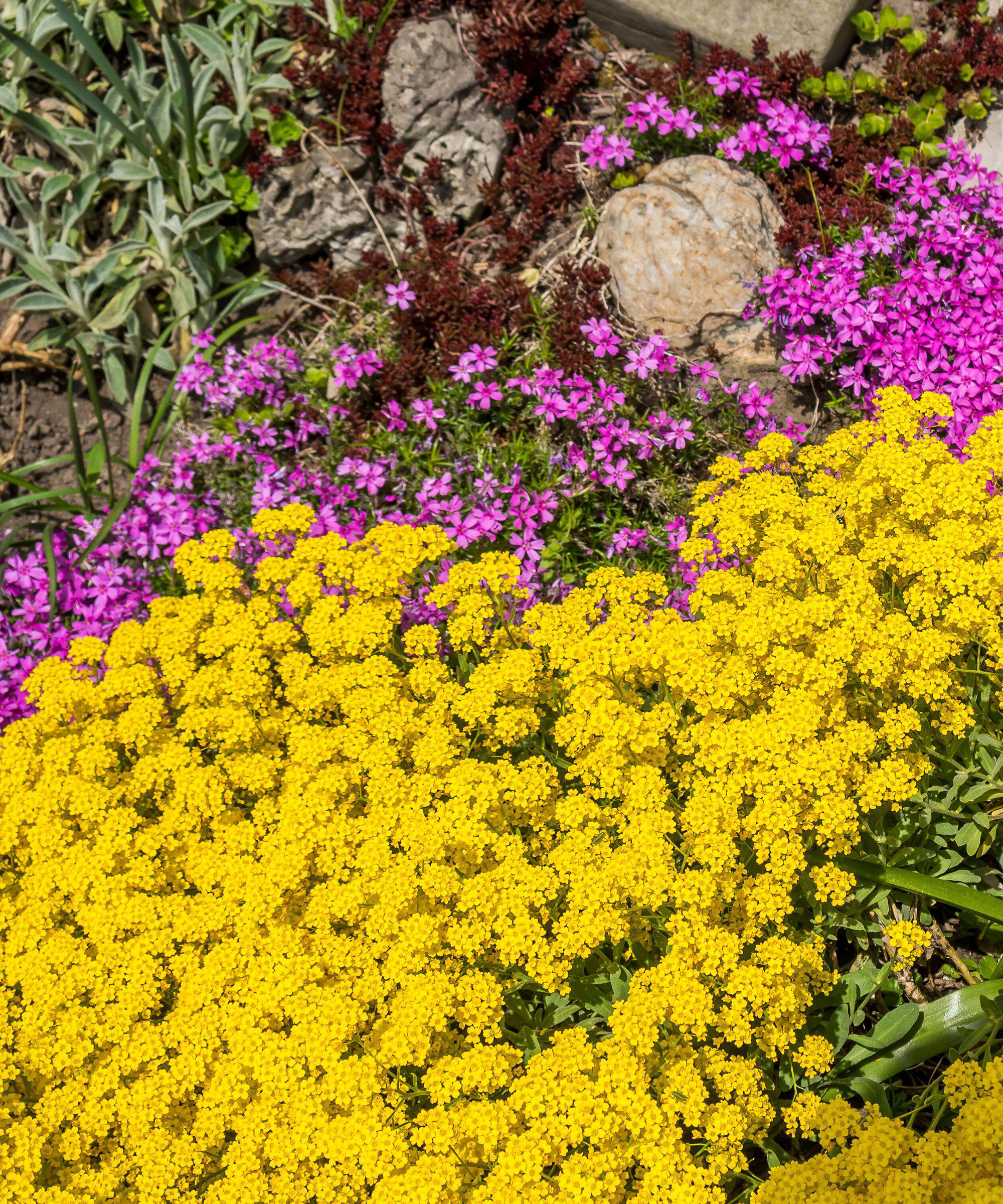
Aurinia saxatilis has vibrant yellow blooms
- Best for: Paving edges and hellstrips
- Height: 8in
- Spread: 18in
- Hardiness: USDA 3-7
An old fashioned favorite for border edges and cracks in between paving, white flowering sweet alyssum is a good choice, but its yellow counterpart is hardier still. Nature Hills recommends the perennial yellow Alyssum, Aurinia saxatilis 'Golden Yellow', for its scented brilliant golden yellow blossoms in spring.
A drought-tolerant plant and pollinator friendly, these are good-value workhorse plants that will cope with light foot traffic.
What is a walkable ground cover plant?
While you wouldn’t necessarily choose to walk on your prize plants, there are many tough contenders that cope with a fair degree of trampling. Just as in wilder landscapes, plants evolved to cope with grazing animals and foraging humans, so one of the benefits of ground cover plants is that they have tough leaves that recover or grow back easily when crushed.
These powers of regeneration can be embraced in the garden. Choose walkable ground cover plants that can accommodate light garden traffic, planting them as a mixed carpet or in pockets in between paved areas.
Is creeping thyme soft to walk on?
While you won’t get the softness of grass or moss from a carpet of creeping thyme, it certainly doesn’t feel unpleasant to bare feet. It also has the added bonus of releasing its delicious herby scent when the tiny leaves are crushed by footfall, so any tickling or mild discomfort would almost certainly be offset by the pleasant aroma in your fragrant garden.
What ground cover plants can you drive over?
While many walkable ground cover plants can cope with light foot traffic, there are few that withstand the weight and repeated traffic from cars. However, you can use many of the recommended plants in driveways, if you set them into hard landscaping pockets or crevices. This will give you practical solutions to improve drainage and water runoff prevention, plus attractive foliage and flowers. Three of the better plants with a good trampling recovery rate include creeping thymes, ajuga, and lithodora.
Walkable ground cover plants are also very useful for more naturalistic planting styles, working well in gravel, rubble and rock gardens and also as alternatives for old fashioned asphalt driveways.
They can help to break up the surface of your landscaping materials with attractive flowers and foliage. What's more, in these times of climate change and uncertain weather they can also provide a practical solution to surface runoff from heavy rainfall.
Sign up to the Homes & Gardens newsletter
Design expertise in your inbox – from inspiring decorating ideas and beautiful celebrity homes to practical gardening advice and shopping round-ups.

In her years of gardening, Camilla has designed planting schemes for gardens large and small in and around London, written about plants and how to grow them, and worked on BBC gardening TV shows in the UK. She's also works as a therapeutic horticulturist, teaching growing for wellbeing and mental health.
-
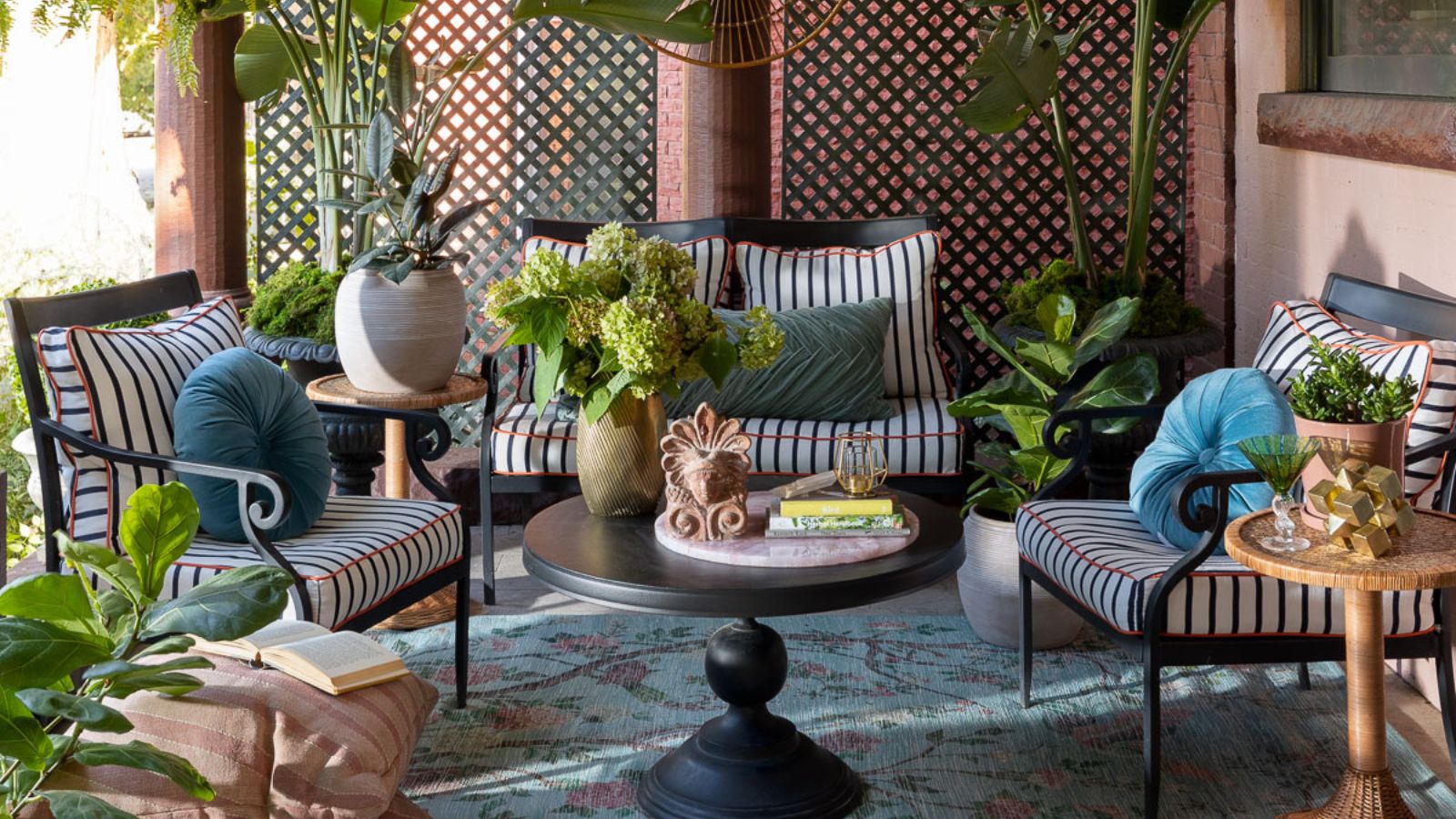 Designers share how to make your outdoor living room look more expensive – and the affordable products to get you there
Designers share how to make your outdoor living room look more expensive – and the affordable products to get you thereFrom layered lighting to luxe-looking textiles, these simple swaps made all the difference
By Charlotte Olby Published
-
 5 surprising but brilliant ways to clean with old socks – from perfectly buffing stainless steel to deterring pests naturally and more
5 surprising but brilliant ways to clean with old socks – from perfectly buffing stainless steel to deterring pests naturally and moreTackle dust in tricky corners, clean your mirrors and even banish bad odors with those rogue single socks
By Andy van Terheyden Published